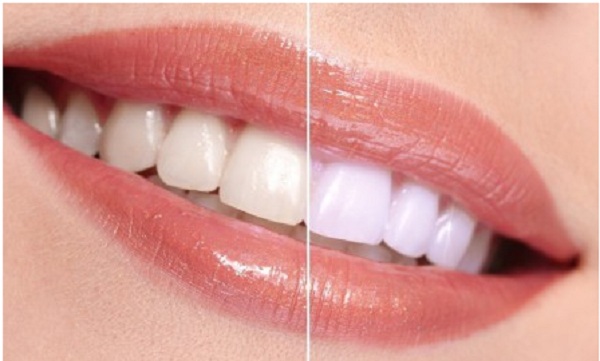Whitening toothpastes and mouthwashes
The color of the teeth, as discussed in the post “The color of our teeth”, is yellowish-white and depends mainly on the color of the dentin (yellow-orange) and the thickness of the enamel, but can also influence other factors such as genetics or age. Furthermore, it can be altered by the occurrence of stains, which in turn may be intrinsic or extrinsic.
Intrinsic stains are those that occur within the tooth structure and may occur during tooth formation stage (for example, fluorosis or use of drugs such as tetracycline) or after the eruption (color changes due to caries, trauma, etc.). For disposal, we must go to the clinic and to perform restorative treatments.
Meanwhile, the extrinsic stains are substances that are deposited on the enamel and adhere to it, forming spots that may alter the color of the enamel. Most of these spots have their origin in food and in the snuff, but also can be caused by the colorants of some products and by certain bacteria. They are reversible and stains can be removed by professional medical treatment both at home and / or using cosmetics for personal use (toothpaste and mouthwash).
Whitening toothpaste and mouthwashes are specially formulated to remove surface stains the enamel. It is important that these pastes are not abrasive, as in this case, may cause damage to the enamel that favors the appearance of other dental problems.
Different ingredients incorporated in the formulations of toothpaste and mouthwash in order to obtain a bleaching action:
- Phosphates systems help prevent the formation and deposition of calculus (plaque crystallized), commonly called tartar. Tartar deposits on our teeth and is one of the causes of discoloration of the teeth, and cannot be removed with a conventional toothbrush and toothpaste; it can only be removed in dental clinic.
- Sodium bicarbonate removes stains from the enamel surface also exerting a slight abrasive effect, besides exercising a slight antimicrobial action. It is a compound found in use.
- Peroxides (carbamide peroxide and hydrogen peroxide) are able to reduce the luminous tone enamel. Its mechanism is to destroy the links of the substances that cause the color change (chromophores), thus masking the presence of these spots. Because of its high level of abrasiveness and its production of a free radical mechanism of action in Europe, it is only licensed for use in concentrations below 0.1% for hydrogen peroxide and 0.3% for carbamide peroxide products cosmetic personal use, above this concentration, are considered for professional use.
- Papain acts hydrolyzing substances causing stains, thereby preventing adsorption to dental enamel.
- Polyvinylpyrrolidone (PVP) is responsible for inactivating substances causing stains, removed by hydrogen bridge bonds and prevents its deposition. In addition, it is associated with phosphates to increase bleaching effectiveness.
- Perlite makes a slight polishing action on the enamel and provides a surface that reflects light to obtain a shiny effect.
- Most abrasive systems, such as pumice, alumina or silica (precipitated silica), whose function polishing the surface of teeth, obtaining a smooth surface. Is not advised in everyday products.
- Hydroxyapatite nanoparticles due to their size are integrated into the enamel and repair irregularities in its outer shell, getting a regular, smooth surface and restoring its original brightness, giving the impression of whiter teeth.
The whitening toothpaste and mouthwashes nail polish pastes can, eliminate and prevent staining, and, therefore, help recover the original white teeth. However, if you want to acquire whiter than their own tones, it must be carried out by treatment in the clinic. Outpatient whitening products are particularly suitable for the maintenance of clinical and whitening done to prevent and eliminate the most superficial stains.








